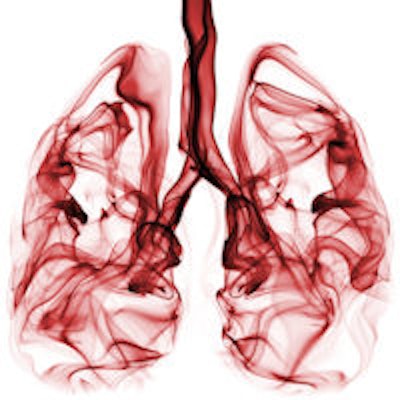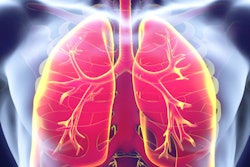
It's safe to track patients with nonsolid nodules detected on CT lung cancer screening with annual low-dose CT -- mitigating the need for biopsy or surgery of these lesions, according to a new study published online July 5 in Radiology.
The findings are good news for patients and also for a healthcare system that has often been burdened by high costs due to overtreatment of slow-growing cancers, contributing author Dr. David Yankelevitz from Icahn School of Medicine at Mount Sinai in New York City told AuntMinnie.com.
"Critics of lung cancer screening say that one of its harms is overdiagnosis," he said. "But, actually, the harm comes from the aggressive treatment of slow-growing cancers. Our findings show that nonsolid nodules can be managed in a way that can spare patients from the costs, complications, and stress caused by unnecessary biopsies or surgery."
Seeking validation
The study builds on previous research from Yankelevitz; lead author Rowena Yip, also of Mount Sinai; and colleagues, in which they analyzed data from more than 57,000 participants in the International Early Lung Cancer Program (I-ELCAP) and found that nonsolid nodules of any size could be followed with annual CT scans.
 Rowena Yip from Mount Sinai.
Rowena Yip from Mount Sinai.For this research, the group sought to validate the I-ELCAP findings by looking at data from the National Lung Screening Trial (NLST). Yip's team searched the NLST database and identified all participants who had at least one nonsolid nodule found on CT (Radiology, July 5, 2016).
"The NLST data are useful because all patients, regardless of whether diagnosis was pursued, were followed up to the close of the study," Yip and colleagues wrote.
The cohort included 2,534 patients. Of these, 48 died of lung cancer. Twenty-one of the 48 did not have a nonsolid nodule in the cancerous lobe and were eliminated from analysis, leaving 27 with a nonsolid nodule in the same lobe as the cancer.
Yip and colleagues found, however, that the nonsolid nodules in these 27 patients weren't the cause of death. Rather, the cause was another solid or part-solid nodule in the same lobe of the lung: In 12 of the cases, it was an adenocarcinoma, and in 15 of the cases, it was another cell type.
The findings lend further support to the idea that these cancers have an indolent course and can be managed with annual follow-up, the researchers concluded.
"Whereas some of these nonsolid nodules may become aggressive cancers over time, the changes in the nodule appearance can be documented with CT scans, which for now remain the best biomarker for cancer progression," they wrote.
Talk to the doc
The researchers hope that this new management paradigm could prompt the U.S. Centers for Medicare and Medicaid Services (CMS) to broaden its guidelines for who is eligible for lung cancer screening: for example, to people who have had long-term exposure to secondhand smoke.
But in any case, managing lung cancer in this way depends on clear communication between patients and their doctors, Yip said.
"Patients need to be involved in a shared decision-making process on how to track and treat these cancers," she said. "Some may be more comfortable with annual follow-up, while others may want to proceed with treatment. It's important for physicians to talk frankly with their patients about their options."





















